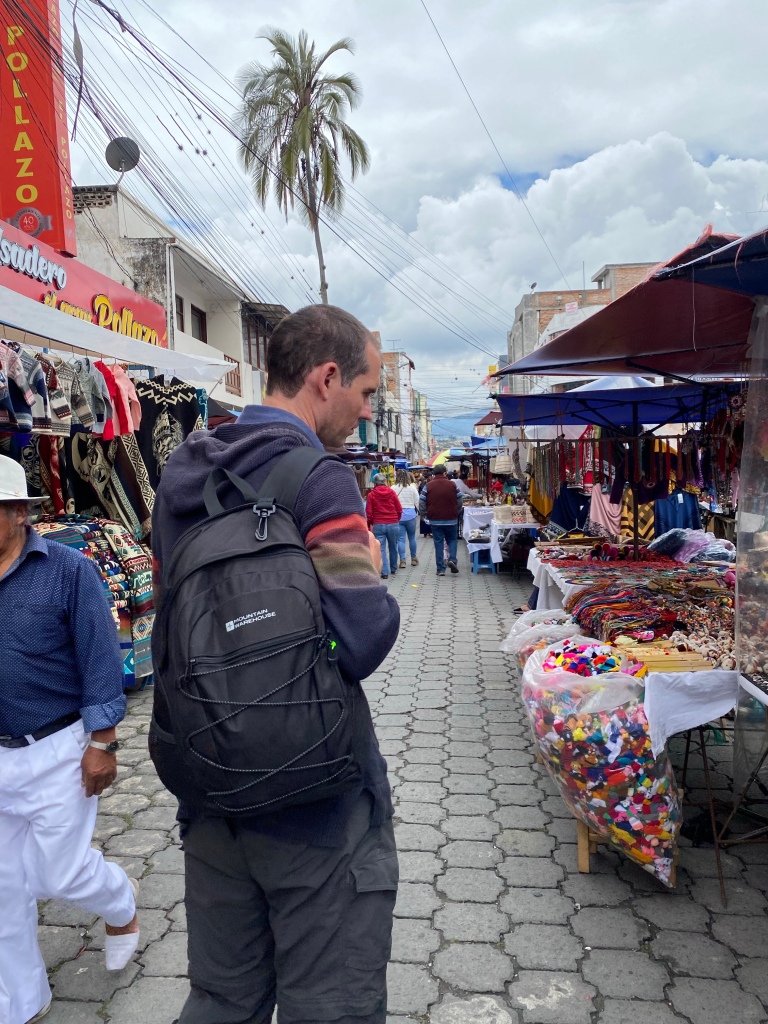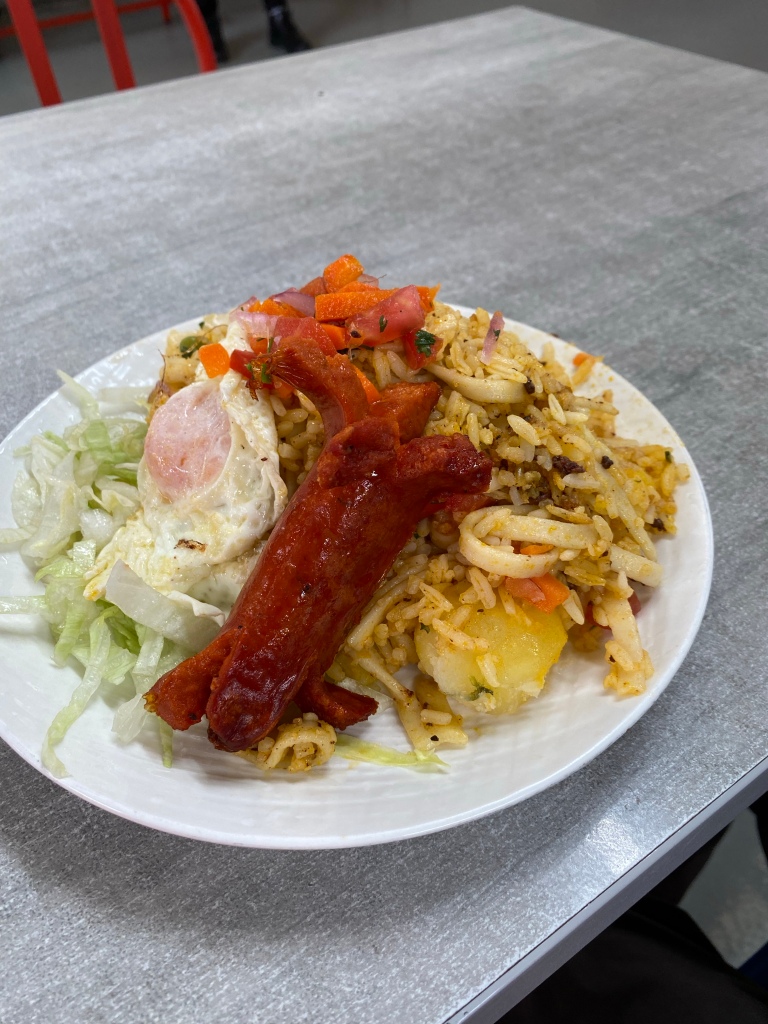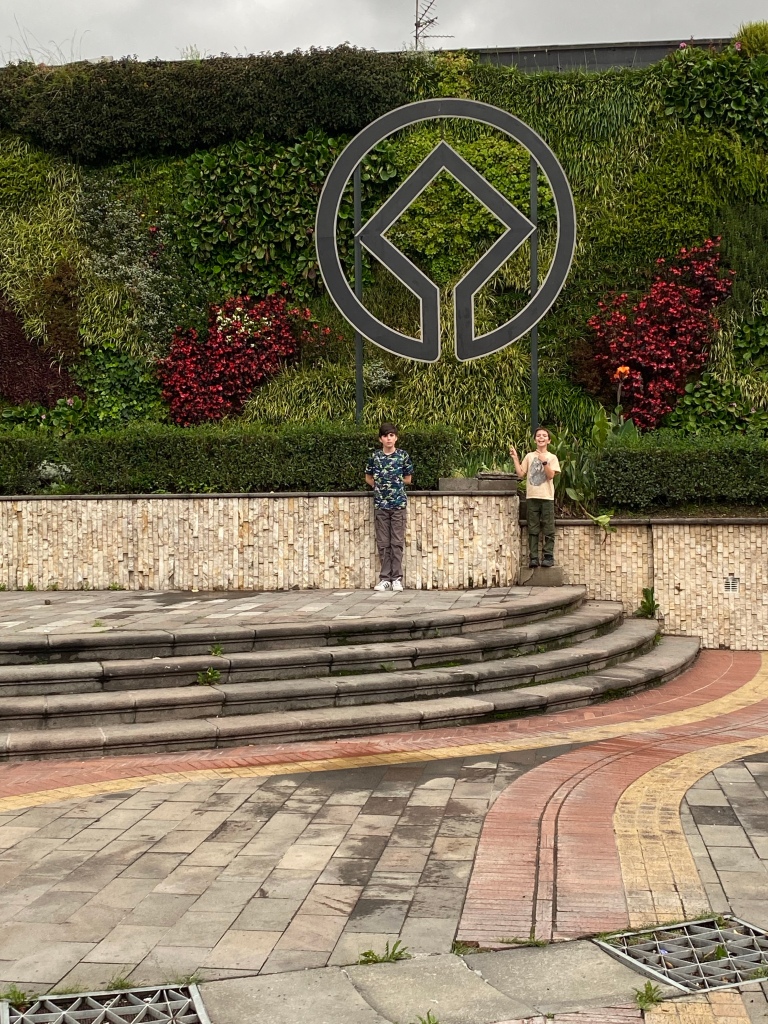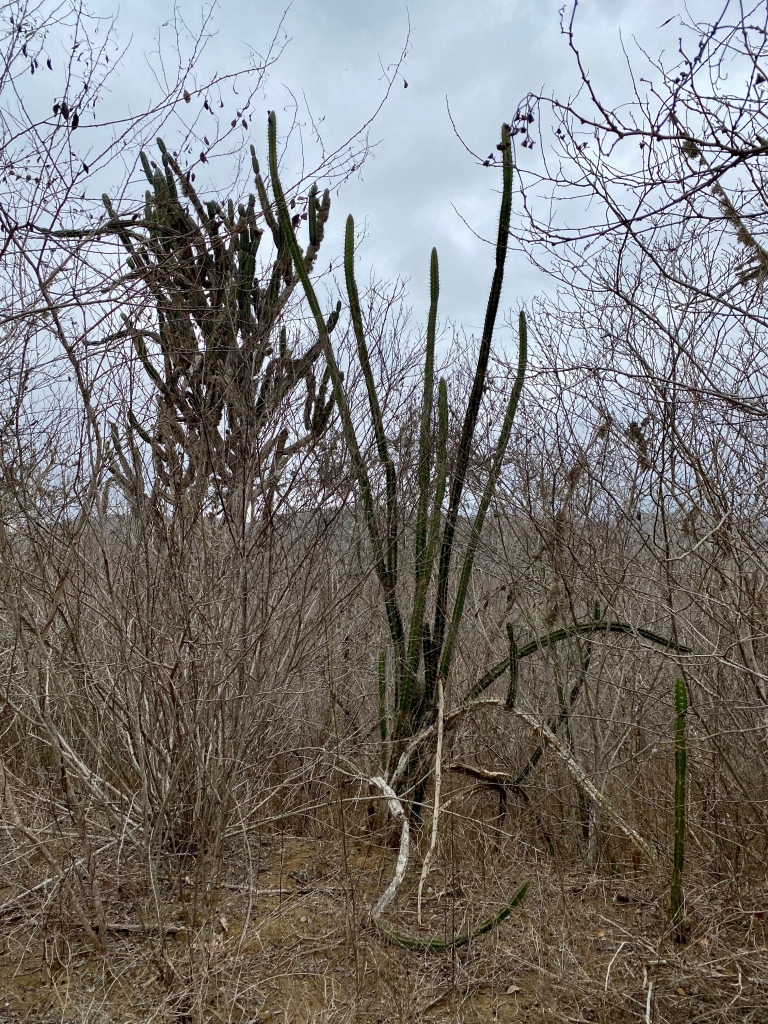
As one of the most biodiverse countries in the world, Ecuador was high on my list of must-visit destinations as we were planning our adventures. It’s not just Galapagos and the Amazon, but also the high Andes, the glaciers among the volcanoes, and some ecosystems I’d never even heard of until I arrived here! Apparently Ecuador has more species of mammal and amphibian per square metre than any other country on earth, 10% of the world’s plant species, and twice as many bird species than the whole of Europe! Definitely somewhere we wanted to explore.
But with only 3 or so weeks available in do the exploring, we had to make some sacrifices. We knew we wanted to visit the Amazon Rainforest in Ecuador- wisdom has it that it’s cheaper than in Peru, safer than in Colombia and easier to access than in Bolivia. And we wanted to give ourselves a good amount of time in the rainforest. So that really just left us with 2 weeks for the rest of Ecuador. That left us wanting to prioritise places which were ecologically or culturally different from what we had seen in Colombia, or what we would be seeing in Peru. Which is a long and complicated way of saying “this is why we missed out a bunch of amazing places that I wish we could have visited”!!
To be fair, we also haven’t been doing Ecuador in the most sensible of orders, partly due to necessity, and partly due to rushed research. But cross-country bus journeys have given us the opportunity to see some places from the window which we would have otherwise missed. Which is better than missing them altogether I think. Or maybe it just shows us what we’re missing!!
Anyway… we crossed the boarder from Colombia at Ipiales / Tulcan. We’d heard all sorts of tales of confusion and intimidation about the crossing, but actually it was super straightforward and well organised. Maybe it would have felt different in the night time, but by day everything was well signposted and everyone was friendly. And it was quick… maybe 5 minutes waiting for the stamp to leave Colombia and another 5 to enter Ecuador, then straight into a taxi to the bus station in Tulan.

We jumped on a bus to Otavalo, and were there in time for a late lunch. Well, that’s what the plan became when the bus dropped us in a rainstorm on a random main road and we couldn’t seem to get either a taxi or an Uber! We figured waiting out the rain in a restaurant was our best solution. Once the rain slowed we managed to get a taxi, tho the poor driver had to go the long way round to our hostel as he couldn’t get his car up the hill with us and all our bags!!

Staying up the hill did give us a great view over the town towards the volcanoes from our balcony. Otavalo is a small town in the mountains north of Quito. Although not especially remarkable itself, its setting is beautiful, and when the twinkle of the town’s lights in the bowl of hills is really quite stunning. What draws visitors to Otavalo itself, however, is its Saturday market. Many of the villages around Otavalo have been known for their weaving since pre-colonial times. Each Saturday craftspeople and artisans, as well as people selling random chickens (live) flock into the town to set up stall. Although there is an element of tourist-show to the market these days, many of those shopping were local people, dressed in traditional garments of black wrap skirts and beautifully embroidered white blouses. Little old ladies scampered around with huge sacks on their backs, crunching on little snails which appeared to be a common snack. Anyone who knows me knows that I’m not a shopping fan. In fact, if I’m honest, shopping of any kind hits the top spot on my list of most hated chores. But wandering among the countless stalls of textiles, artworks, herbal remedies and chickens was really fun.

We managed to find the food market (mainly because a French family who we’d met at our hostel had substantially better Spanish than us!!) so we wandered the fresh produce stalls there (amazing fruit and veg, but an overwhelming smell of tripe) before heading upstairs to the food court for lunch. In both Colombia and Ecuador, a set lunch of juice, soup and then chicken, fish or meat with rice, beans and salad is standard, and usually costs no more than $2 or $3. But we took the opportunity to branch out, choosing a dish which had been cooked up in something like a paella pan, consisting of rice, noodles, veg, potatoes, chicken, bits of meat and prawn and crispy bits of liver, all topped off with a friend egg and a sausage! I’ve no idea what you call it, it was a little high risk in terms of food poisoning (but luckily we got away with it!), but it was delicious!!

After Otavalo we headed south to Quito. Quito is enormous! Well, it’s probably no bigger than any other city really, but it really felt huge! It’s spread north to south in a valley, high up in the Andes. At an altitude of 2800m, it’s officially the highest capital city in the world, since La Paz is technically not the capital of Bolivia. We stayed in the old town, a UNESCO World Heritage site, though one which is surprisingly not as preserved as many.

Quito was… frustrating. Maybe part of the issue was that we didn’t really have time to see it properly, especially if we wanted to avoid the early afternoon downpours. Part of the issue was that we spent much of our first day traveling from the bus station to the Airbnb, then to the other bus station to buy bus tickets, then finding food to cook for dinner in an area that seemed closed for the day by 4pm on a Sunday afternoon. But Quito promised much by way of museums. Matthew had made a list and an itinerary. But almost all of them were closed – for renovations, because it was Monday, or just seemingly randomly. The museum of the city told us on Monday that they were open on Tuesday, then on Tuesday that they were open on Wednesday. The 2 museums we went to were great, and we visited several beautiful churches. But some of the other museums looked like they had wonderful collections of pre-Inca artefacts and local history, and it’s such a shame we missed them, especially having skipped Bogotá’s museums.



We did manage to accidentally jump on a free guided tour of one of the churches which included a trip up to the rooftops which was really cool, and helpfully some Peruvian fellow travellers were able to translate the bits of Spanish that we were struggling with. And the same church was preparing an enormous nativity model for Christmas. I say ‘nativity’… it covered the whole Christmas story from the annunciation to the Holy family’s return from Egypt, including various moving components, a full lighting scheme and a working rain cloud / river! It would have been really cool to see it all switched on, but actually it was fascinating to see it in the middle of the construction process, especially for the boys with their love of model making.


From Quito we should really have been heading to the jungle. Geographically it made more sense. But the dates didn’t align. So instead we took a detour down to the coast. Galapagos was never going to be within our budget, not if we want to have any chance of stretching the money for 3 years. But we’d read about an island, Isla Plata, where you could see some of the same wildlife that you’d see in Galapagos, particularly the Blue Footed Booby. To call it a ‘poor man’s Galapagos’ is to do it a disservice, not to mention completely confuse the geology. While Galapagos is a relatively young volcanic archipelago, Isla Playa is much older, broken off from the mainland, apparently when the North and South American continents collided. Now cared for as a National Park, the island is a nesting haven not just for the Blue Footed Booby, but also the Nazcar Booby, the Red Beaked Trumpet Bird and many other species. The Boobys, which require a clear flat space oh which to lay their eggs, nest right in the paths around the reserve.

After our trip to the island itself the boat stopped for us to snorkel over a reef just off the island, where we swam with pacific green turtles!

Whilst at the coast we treated ourselves to a beachfront cabin in a small fishing village called Machalilla. This gave us some time to relax on the beach, but also allowed us to walk to another National Park, which preserves the last remaining 1% of an ecosystem I’d not even heard of before: the Dry Tropical Forest. When we passed it at first in a taxi I definitely thought it was a bunch of dead trees and bushes, presumably victim of climate change. Even the cacti looked desiccated! But actually that’s the normal state of the forest in dry season- not dead, but leafless to conserve energy and water- green and alive inside the branches. It was amazing how much life was supported in this seemingly barren landscape- birds and lizards and snails, even flowers and fungi. Though it might sound bleak, the park had its own fragile beauty.



Another strange thing about Puerto Lopez was the climate. We’d arrived by bus from the altitude of Quito, expecting it to be hot. After all, we were clearly at sea level, and essentially on the equator, give or take a couple of degrees. So it’s natural to assume it would be hot. But no… it was cold!! Well, not like freezing, but we definitely needed sweaters. It turns out that the climate of that region is governed by 2 currents. In the wet season, the Panama Current keeps temperatures at a sweltering 40-45 degrees (Celsius). You get mainly blue, cloudless skies with an afternoon monsoon. By contrast, in the dry season the Humbolt Current brings temperatures of around 18-25 degrees with thick cloud cover but little rain. Not what we expected at all!
From the coast we took the overnight bus back to Quito, ready to set off on our jungle adventure. But that merits a post all of its own.
No blue footed boobys or turtles but raggy loved the sand of Cleethorpes beech with other doggy friends he found and the occasional young child plus a treat in the cafe near the pier!!! Dad
LikeLike